#it teaches you the sign language you need to specifically communicate underwater
Explore tagged Tumblr posts
Text
My mom is a licensed SCUBA diver. This is all 100% true, and I'd like to add one thing that they teach you in dive school:
Panic and you die.
That's it. It applies to almost every dangerous situation in life, but especially when you're swimming/diving in open water. If you find yourself in a riptide, have an issue with your equipment, get disoriented, see a shark, or whatever, the absolute last thing you should ever, EVER do is panic. Panic + water = death.
The second you find yourself losing control of the situation you're in, your natural reaction will be to panic, because that's how we survive on land most of the time. But when water is involved, our instinct to panic is often more sensitive, and our panic response is even more intense than if we were on land. With SCUBA-related panics, a lot of younger divers and students forget everything they learned in that moment, and that's when their dive master or dive-buddy is supposed to intervene and snap them out of it by demonstrating their own calm. This can include grabbing a panicking student by the face and making calm eye-contact and SCUBA-specific sign language (it's a thing; divers traditionally use sign language to communicate underwater because in-mask mics and radios are comparatively new and not trustworthy enough to implement without an analog like sign language to fall back on if there's an equipment failure) to coach the student into calming down and remembering their training for the situation they're in.
What you need to do is respond to that moment of "Oh shit I'm in trouble" with, "I have to calm down and observe what's happening to me and take stock of my skills and equipment or I will do something that ensures I don't survive."
When you're in a pinch-decision moment, sometimes the best thing you can do for yourself is stop, breathe, and focus on "I will live if I remain calm." Even aquatic predators, rarely as they attack humans, are much less likely to harm you if you're able to stay calm and avoid thrashing around like prey in the water. The only time my mom ever got into real trouble in the water while still following the safety rules was when an octopus latched itself to her face and tried to tear her dive mask off.
As someone that has grown up surrounded by beaches and done surf life saving, I know how the sea works. Lots of people dont. Every summer multiple tourists die here because they don’t respect the sea, if you’re going to the coast, here’s a thing I saw on Facebook.
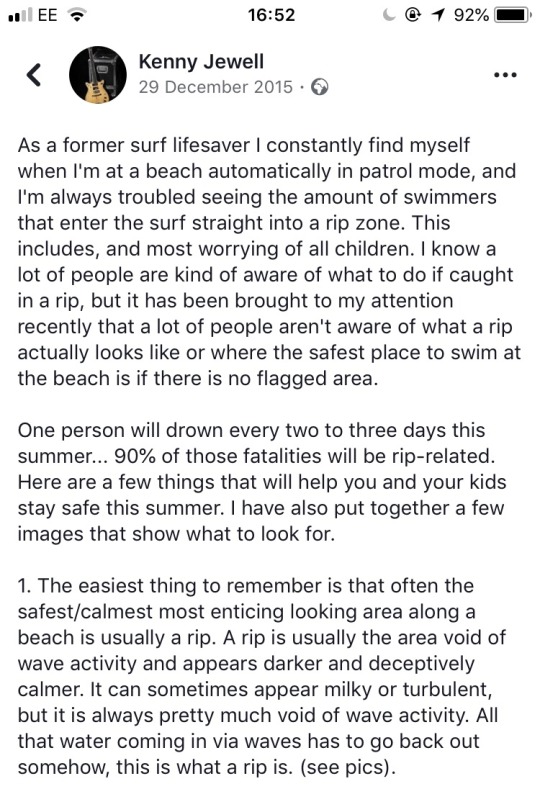
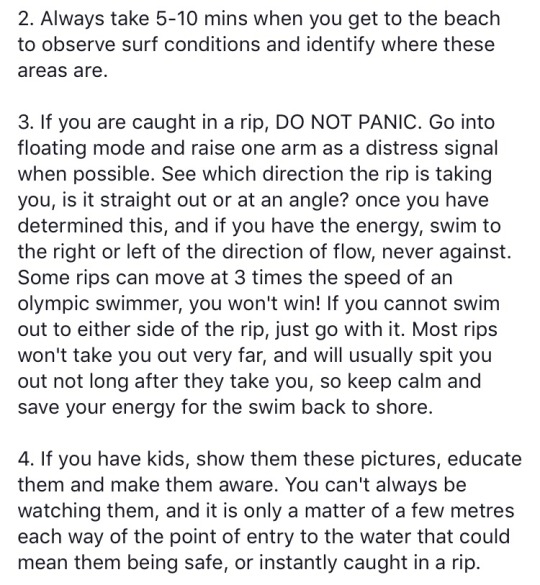
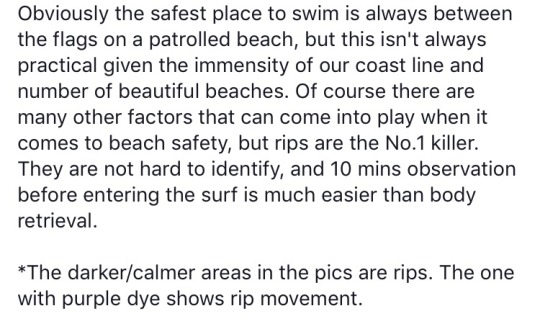
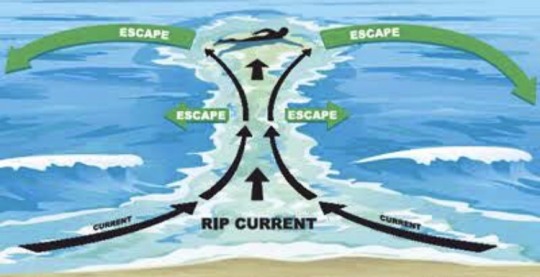
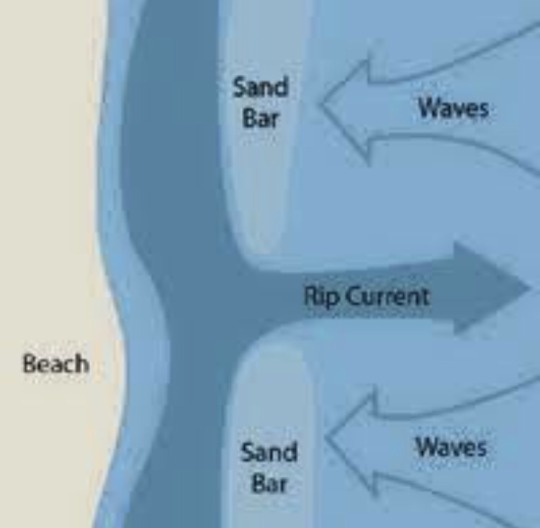
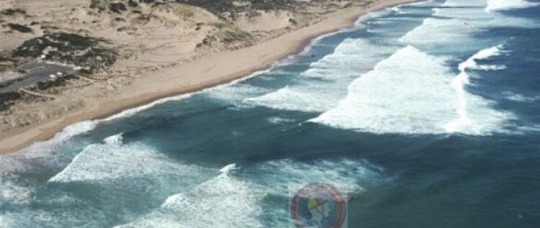
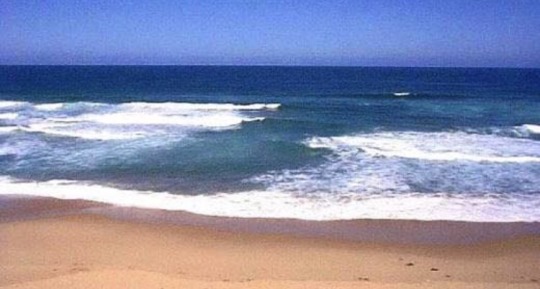
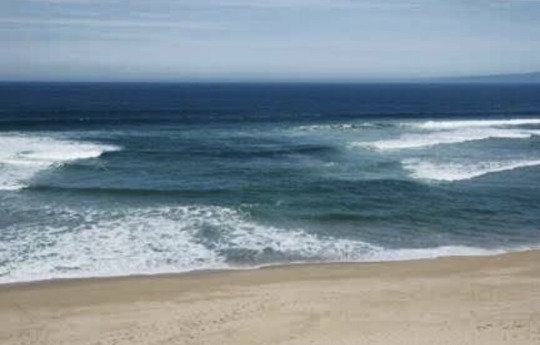
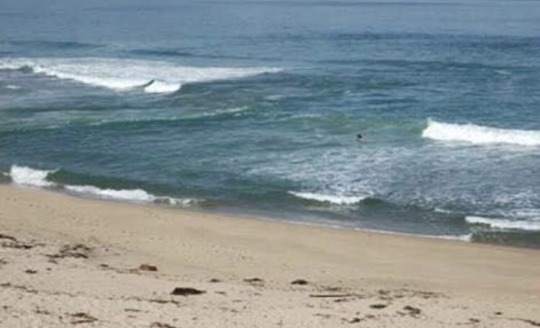
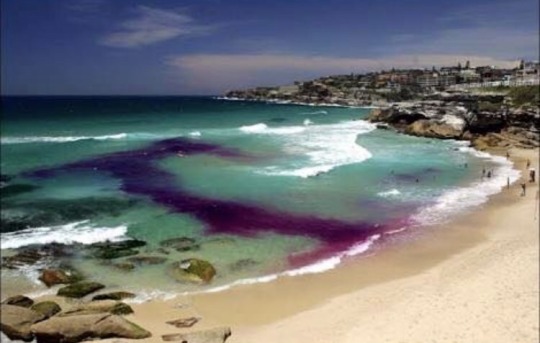
#scuba diving#swimming#water safety#beach safety#the sign language is different to official sign languages btw#it's specific to diving and includes unique hand signs for specific animal life#as well as specific problems you can sometimes experience underwater (like getting gear tangled in your oxygen tubes)#so it's not that scuba school teaches you your language's official sign language#it teaches you the sign language you need to specifically communicate underwater
318K notes
·
View notes
Note
meta canon! :D
((trolls and language! I think i’ve rambled about this plenty before, probably, but I headcanon that trolls have ‘standard’ Alternian (the ‘official’ form of the language that schoolfeeds are broadcast in, imperial announcements are in, etc), but also a number of dialects and other languages, some of which are very rapidly changing, and others of which hold steady for millennia at a time. when the Empress forced all adults to be exiled from Alternia, that had some major impacts on the language, especially regional tongues, as all the adult speakers were suddenly just not there anymore to teach the young ones their own forms. this is why Tavros has a username in a language that isn’t Standard. he actually cribbed it, as a kid, off of a very old (pre-Exile) movie he saw a long time ago, where rusties like himself were speaking a different language entirely. he heard a bit of a song, in it, and liked it so much he’s used ‘adiosToreador’ ever since, despite not really understanding much of it. he has a *little* bit of the language, purely off such old films, but never really had the opportunity to learn to speak it properly as a conversational thing.
pls note that I personally do not and will not equate Alternian Standard to English, or the rustie dialect Tavros’s long-ago regional predecessors might have spoken to Spanish. I am/was a language teacher, and I’m a linguistics geek. It physically hurts me to imply that English, with all its illogical fuckups and weirdnesses and culturally-specific quirks, would just somehow magically reinvent itself in an alien civilization, spoken by creatures who are not humans, and did not have a bunch of Anglo-Saxon peasants being subject to the Norman conquest, etc etc. Alternian is not English, it’s not mutually intelligible with English, and it’s just Paradox Space magic that people read posts in a language that is familiar to them. same thing with Damara’s language. it’s not weaboo Japanese. it’s not bad google translate Japanese. it’s a different language, which existed on her version of Beforus, and she’s a proficient and fluent native speaker of her own damn language, regardless of the visual shorthand used to represent it in HS canon.
Tavros does speak and understand actual human English, though, on account of living on a meteor with versions of Dave and Rose for a number of years. I expect he probably picked up a little bit of whatever you get when you mix a hint of urban Texan with upstate New Yorker, accent-wise, and a lot of both their vocabularies.
uhhhh... what else. oh, seadwellers have their own distinct language, which probably contains more clicks and sounds that are meant to carry underwater than standard Alternian does. purplebloods also developed a form of sign language among the laughsassins, meant to communicate between members of a squad when they needed to be quiet, which is still extant in the Church and taught between adults, as well as being used for some holy rites. they probably honestly also developed it just to piss off seadwellers who wanted to know what they were smirking about.
also, with how old the Empress is, her speech probably very nearly sounds like the equivalent of Chaucerian English to a modern-day ear, to most Alternian youngsters. older highbloods and seadwellers that have to have a lot of dealings with the upper echelons of the Empire probably start to speak more and more like her over time, for clout.))
8 notes
·
View notes
Text
Literally, none of the ‘evidence’ that hork-bajir are unintelligent holds up to scrutiny.
1. Hork-Bajir (Controllers) speak in broken English and use a bunch of loan words while the seers aka the smart ones speak perfect English.
I don’t have to explain how that’s kinda racist, do I? Ya know, that certain groups of humans are categorized as stupid or smart by how well and properly they speak certain languages.
--Also, why would the use of loanwords be a sign of stupidity? You have the ability to juggle multiple languages in yer head and pick the most accurate to come to mind for what you need.
And anyway, English is not the first, second, or third language of any hork-bajir. They had to learn that shit second hand while being controlled against their will while fucking enslaved b/c there’s no reason for the yeerks to deliberately teach their different groups of slaves to communicate with each other. Or they learned it in the few free hours they had every 3 days when their yeerks were feeding by managing to establish communication with the human slaves (who didn’t necessarily all speak English so hell there’s probably some horks out there able to speak some Spanish or Chinese)
--It’s not like we see the hork-bajir acting like the Animorphs who never even bother to try learning a language that the horks are more fluent in are dumbasses for being monolingual (or bilingual in Marco’s case)
Also, hork-bajir aren’t built to speak any form of human language? Like they don’t have human lips or human tongues or human teeth or human pallets or human vocal cords. Are humans stupid b/c we can’t accurately replicate dolphin communication underwater with our natural bodies?
Also where exactly did Toby and Dak learn those grammar structures that no one else around them use? Either someone had to teach them that grammar or the writers pulled it out of their ass b/c they associate proper English/ Universal Andalite whathaveyouspeak with intelligence. For some reason.
(Also the Controllers not speaking 100% galard or yeerkish to each other when alone amongst themselves is... just fucking lazy writing my dudes. How else would the Animorphs know what they’re saying without Ax to translate?)
2. According to Seerow the andalite the language of the hork-bajir of the valley he studied (specificity b/c we don’t know if the horks in different valleys have different languages and/or dialects) have less than 500 words.
So what? Hork-bajir speech has been demonstrated to be short and to the point. Having 20 words for the same fucking color doesn’t mean shit about yer intelligence other than you talk a lot about that particular fucking color.
And for that matter, hork-bajir have more than one indigenous language. Remember the singing trees that the hork-bajir used to communicate with faraway tribes and other valleys? The one made of musical tones? Andalite translator tech didn’t even recognize it as a language and Dak had to translate for Aldrea what the news from the other valley was.
3. Hork-Bajir have no written language and can’t read.
Congrats assholes! Oral histories and cultures are a thing! Civilization doesn’t fucking work on evolutionary levels. Hunter-gatherers aren’t fucking required to settle down and start farming. Cities aren’t the fucking best for every location and climate, nor are they the most obvious thing for any group of people to strive for. Hunter-gathers still fucking exist and their lifestyle isn’t any worse than that of some smuck who belongs to a high and mighty full of itself industrialized nation that tried to wipe out the hunter-gather’s people b/c they wanted fresh farming land b/c they exhausted the soil of their current farms by poor land management.
Also why the fuck would fucking aliens know how to read a foreign language that they presumably only learned orally. What the yeerks giving free reading lessons to their hork-bajir hosts that they plan to use as disposable shock troops?
4. Hork-Bajir are shown not knowing what to do in unfamiliar places where they don’t have much information to go on.
This is self-explanatory.
5. Horks are shown making decisions that make no sense just so the plot can go who the writer has already decided they want to do it.
Ie. Why would people who have historical knowledge and experience in guerrilla warfare decide that they should totally try out siege warfare against an enemy that vastly outnumbers them in an incredibly difficult to defend base other than to make the Animorphs look good.
TL, DR: There’s no reason for anyone who’s not racist or willfully ignorant to think that hork-bajir are actually stupid like the books claim they are
#nix meows#animorphs#hork-bajir#and no i'm not willing to give the writers the benefit of the doubt on the racist stuff#b/c there is a book in this series where hork-bajir are deliberately compared to black people#down to the most of em are dumb excapt for the few smart exceptions#thing
27 notes
·
View notes
Text
10 Of The Most Successful People With Down Syndrome
10 Of The Most Successful People With Down Syndrome
It’s no secret that people with Down Syndrome are not always fully embraced by society. Even in the wealthiest, most advanced parts of the world, prejudice of this kind continues to persist, and doesn’t appear to be going anywhere anytime soon. But wherever there is prejudice, there are those who stand up against it, and the following are just 10 examples of people who have torn down barriers and broken glass ceilings for people with Down Syndrome all over the world. See Also: 10 Epic Tales Of Survival Against All Odds 10 Ángela Bachiller—Politician

Ángela Bachiller kicked off her political career in 2011, when she began working at City Hall in the Spanish city of Valladolid. A member of the People’s Party, Bachiller spent over two years working as an administrative assistant in City Hall, before standing for election in 2011. Although Bachiller did not win a seat in that election, placing 18th for 17 available posts, she assumed office two years later when a corruption scandal forced Jesús García Galván to step down. While some may attempt to downplay Bachiller’s success by pointing out that she didn’t win the election outright, it should also be noted that she very well may have, if people with Down Syndrome were allowed to vote in Spain. While there is no outright ban on people with intellectual disabilities voting, Spanish courts usually declare people with Down Syndrome as “incapacitated”. Intended to protect them from fraud and exploitation, such a ruling also revokes their right to vote, making it all the more impressive that Bachiller managed to hold a position when she couldn’t even vote for herself.[1] 9Collette Divitto—Entrepreneur

Even without laws that explicitly forbid them from fully integrating into society, people with Down Syndrome consistently face an uphill battle in trying to do so. Collette Divitto discovered just how true this is when, despite finishing a 3 year cooking course at Clemson University in just two years, job interview after job interview was met with nothing but polite rejection. Hellbent on entering the workforce, Collette took her most popular recipe, “The Amazing Cookie”, and founded Collettey’s Cookies. Initially working with a single grocery store, Collette gradually built up her client base, raising her profile with media appearances on CNN, MSNBC, CBS, GMA, BBC, and more, ultimately leading to a partnership with Lays Potato Chips. Collette now employs 13 people, and hopes to use her platform to reduce unemployment and poverty levels among people with disabilities.[2] 8Jamie Brewer—Actor

Probably the most-famous person on this list, Jamie Brewer is an actor that many of you will recognise from her prominent and recurring roles in the American Horror Story series. Having worked in theatre for over a decade, Brewer skyrocketed to international fame when she made her TV debut portraying Adelaide “Addy” Langdon in the pilot of the hit horror show, and has been a regular fixture ever since. In an interview conducted shortly after season one aired, Brewer said “the most difficult part of playing Adelaide is learning how to portray someone who isn’t always viewed acceptable to her mother and society. This is a new challenge for me”. Since she started on the show, Brewer has worked on a number of TV shows & films, and is currently slated to play Princess Aurora (a.k.a. Sleeping Beauty) in a film series that takes old fairytales and gives a more active role to the leading ladies.[3] 7Marte Wexelsen Goksøyr—Playwright
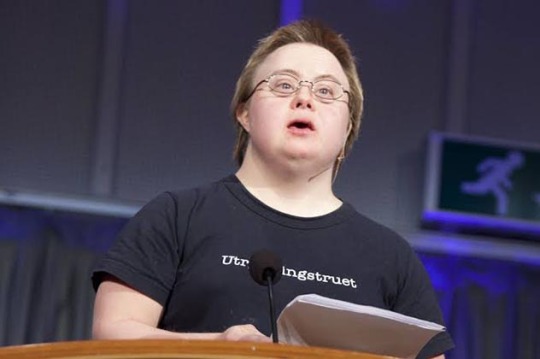
Born in Norway in 1982, Marte Wexelsen Goksøyr is a public speaker and disability activist, but she is most well-known for her work as a writer—more specifically, a playwright. Her most famous work is her interpretation of Cinderella, which is based on her own life, performed at one of Oslo’s most prestigious theatres, and features live music from the naughties pop band Hellogoodbye. Goksøyr’s work made her the first woman to win The Bjørnson Prize from the Norwegian Academy of Literature and Freedom of Expression, and her version of Cinderella was even used as the basis of a scientific study that examined the differences in attitudes towards disabled actors between adults and children.[4] 6 Judith Scott—Sculptor
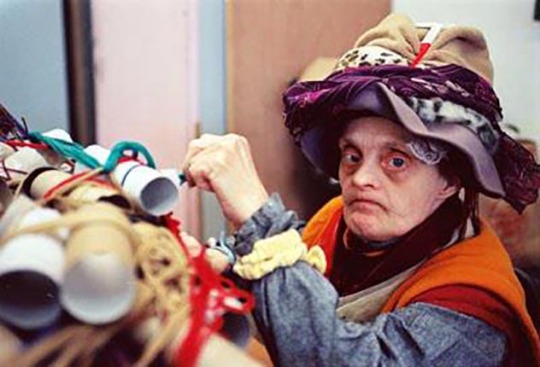
Judith Scott (1943-2005) had exactly the kind of childhood you would expect from someone who became a world renowned artist. Judith’s parents chose not to acknowledge her condition, which was compounded by the fact that she had gone deaf, unbeknownst to anyone in her life. At seven years old, Judith’s twin sister Joyce woke up to find Judith had been taken to a care home, where her undiagnosed deafness meant she failed to qualify for any sort of classes at all. Forbidden by their mother to visit Judith, Joyce spent much of her life working with children in need until, after a 35 year battle, she became Judith’s guardian and moved her to another institution. For years, Judith took almost no interest in any of the creative activities available there, until the day a guest teacher came in to give a class on fiber art. Judith immediately took the the art form, taking all sorts of objects and wrapping them in threads and yarn. It was clear that her work went well beyond pure aesthetics, with the director of the institute saying that Judith was “learning to speak”. Much of her work clearly reflects the loneliness & isolation she experienced in childhood, with twins being a major theme as well. After 10 years, Judith was given her first exhibition which, coupled with a book about her work, caught the attention and acclaim of the international art community. She soon became the subject of 4 documentaries in three languages, and to this day has permanent exhibitions in 12 museums across 6 countries.[5] 5Madeline Stuart—Supermodel

Madeline Stuart is a professional supermodel who was born in Australia in 1996. After attending a Brisbane fashion show in 2014, Stuart decided she wanted to be a model and began training. The following year, her mother launched an online campaign, which quickly gathered steam, resulting in Stuart signing 2 contracts in one week. Stuart’s career didn’t stop there, and she quickly racked up quite the collection of accolades, such as walking the catwalk in New York Fashion Week, Paris Fashion Week, London Fashion Week, and various other weeks and shows around the world. Stuart has also been profiled in both Vogue & Forbes, and has completed the Special Olympics triathlon three times.[6] 4Pablo Pineda—DipT BA

Pablo Pineda is an actor and educator most well-known for being the first European with Down Syndrome to obtain a university degree, having completed both a Diploma in Teaching and a BA in Educational Psychology. In 2009, he won the Silver Shell Award at the San Sebastián International Film Festival for his role in Yo Tambien, a film about a university graduate with Down Syndrome. Despite the name, the Silver Shell award is actually the top acting prize at the festival, which is one of only 14 category A film festivals in the world. Upon returning to his native Malaga, Pineda was also presented with the Shield of the City by the local Mayor. Although he still acts, Pineda wants to build a career in education, and is currently working on implementing an international strategy to increase employment opportunities for people with disabilities. Pineda is a regular guest speaker at universities across the world, has written multiple books, and has a TedTalk available to watch online.[7] 3 Sujeet Desai—Musician

Sujeet Desai is a musician from Buffalo, New York who graduated from high school with a 4.3 GPA before graduating from Berkshire Hills Music Academy two years later. All in all, Desai can play seven instruments: Piano, violin, drums, Bb clarinet, Bass clarinet, trumpet, and saxophone. Two documentaries have been made about his accomplishments, and he has received major media attention throughout the years, featuring on shows such as The View, 20/20, The Oprah Winfrey Show, as well as in the Wall Street Journal & New York Times. His greatest accomplishment so far was his 2015 performance at Carnegie Hall, for which he received a standing ovation. Needless to say, Desai has a Pantheon of awards to his name, including a number of Olympic medals. That, along with his musical ability, may be why he was chosen to give a solo performance at the opening ceremony of the 2009 Winter Special Olympics. He currently lives in New York with his wife Carolyn, and is working towards earning a second performance at Carnegie Hall.[8] 2 Karen Gaffney—Athlete

In 1977, Jim Gaffney held his 9 month old daughter Karen, and blew air in her face. Once her lips were closed, he placed her briefly underwater, in the hopes that he could gradually improve her breathing and muscle tone. This unusual idea proved to be a bit of a Moana moment for Karen, who has gone on to enjoy an incredibly successful career as a swimmer. In addition to winning two gold medals in the Special Olympics, Karen was the first person with Down Syndrome to complete the English Channel relay race, but even then her career was just getting started. Since crossing the channel, she has also conquered Boston Harbor, San Francisco bay (16 times and counting), Lake Champlain, Dun Laoghaire Harbor, and the Escape from Alcatraz triathlon. In 2007, she was the focus of the Documentary Crossing Tahoe: A Swimmer’s Dream.[9] 1 Isabella Springmuhl Tejada—Designer

From an early age, Isabella Springmuhl Tejada followed in the footsteps of her grandmother, who was also a designer. As a child, Isabella would create clothes for her dolls, but play eventually turned into work when she enrolled in a fashion course, where she began working on clothes inspired by Guatemalan culture, as well as designs aimed specifically at people with Down Syndrome. Springmuhl had her first big showcase in 2015, where she sold her complete collection. The success of her show garnered international attention, and a second exhibit was quickly set up in Panama. Her momentum continued to build, and in 2016 her designs were shown at London Fashion Week, which was followed by another exhibit in Rome. All of this landed her a spot in the BBC’s 100 Women list, an annual collection of the most inspirational and influential women in the world, alongside the likes of Alicia Keys, Simone Biles, and Zoleka Mandela.[10] About The Author: Simon has entered his final lap of being a 20-something year old, but still loves Irish stereotypes and potatoes.
https://ift.tt/340AbFf . Foreign Articles December 06, 2019 at 11:49AM
0 notes